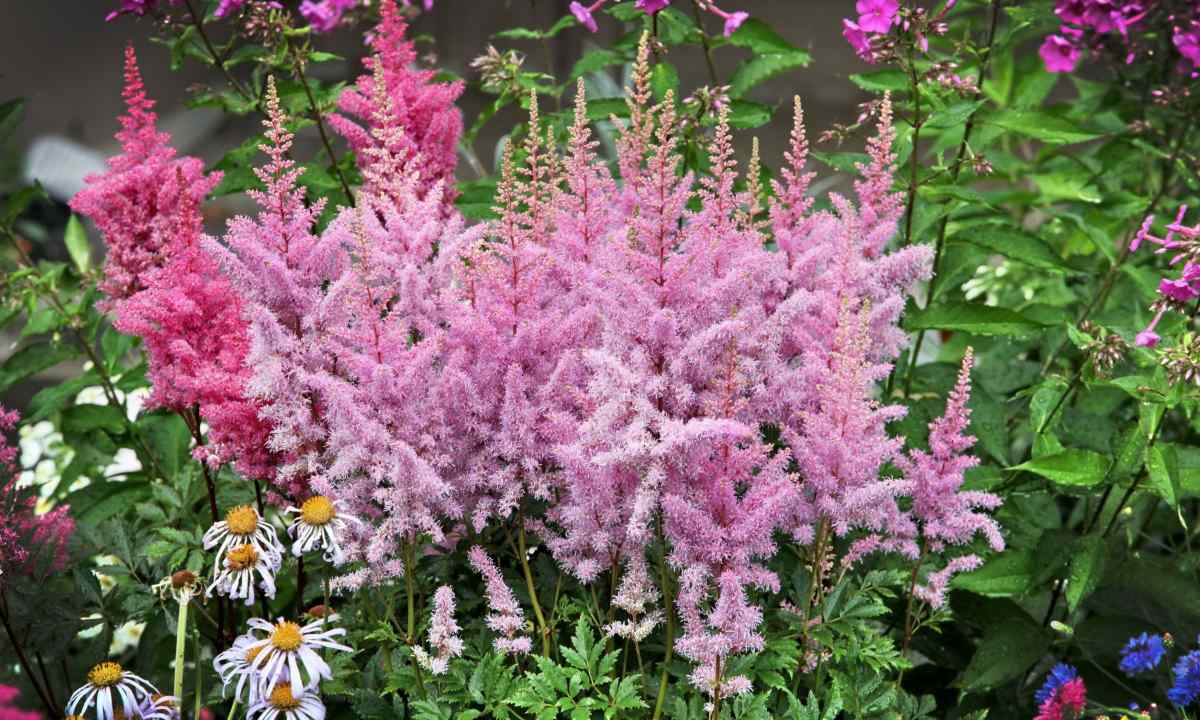Astilba – the ideal choice for shady corners of garden. Besides the decorative effect, this perennial plant is quite unpretentious, does not require special attention and leaving therefore it is convenient in cultivation for those who have no opportunity to devote much time to the garden site.
Features of astilba
The powerful root system which no weeds are terrible is characteristic of astilba. At the same time the plant can easily be multiplied division of rhizome. There are many modern grades of astilba differing with the bush size, blossoming time, form of leaves and flowers, collected in decorative whisks for the sake of which grow up this plant.
Despite the unpretentiousness and endurance, the astilba nevertheless requires the minimum care: the plant needs to be divided and transplanted periodically on the new place as when thickening the flowers begin to become shallow and the astilba loses the decorative effect. Besides, old roots begin to stick out from the earth, it can lead to destruction by frost of bushes in the winter. In such cases it is possible to pour roots humus or peat if there is no opportunity to make autumn change.
Care for landings
For landing it is necessary to choose initially damp shady places with high level of underground water. This plant treats the acidified soils quite favourably, but at the same time is very sympathetic on introduction of mineral and organic fertilizers. It is necessary to divide rhizome so that on each allotment there was at least one sleeping kidney, in this case the astilba will quicker go to growth. By preparation of bed it is necessary to bring wood ashes, bone meal, humus and potash fertilizer in the soil. After landing of bed it is necessary to water and zamulchirovat properly peat or humus. For high-quality and abundant blossoming the astilba needs to provide timely watering. Dry hot air, the scorching sun and overdrying of the soil are undesirable to astilba: at such weather its leaves are twisted, blossoming becomes shallow or disappears absolutely. After blossoming of whisk it is recommended to cut off to help plant to get ready for winter. If on it there is no time, it is quite possible to leave them on bushes – deflowered whisks are very decorative, as well as plumose sectioned leaves of plant, they look fascinating also in the winter, filled up with snow.
Astilba in shady garden
Thoughtfully selecting astilba grades, it is possible to achieve its continuous blossoming all season, since the end of June to the late fall. Perfectly it looks in the neighbourhood with daylilies, phloxes, ferns and hosts. On the bank of reservoir of astilb it will be fine to be combined with akvilegiya, bergenia and buzulnik. It will decorate with the magnificent leaves deflowered plants; at disembarkation of undersized grades of astilb will be fine decoration of the Alpine hill or miksborder. Once having planted this plant in garden, the flower grower will be for a long time fascinated its not striking, but such graceful and appropriate beauty in each shady corner of garden.

